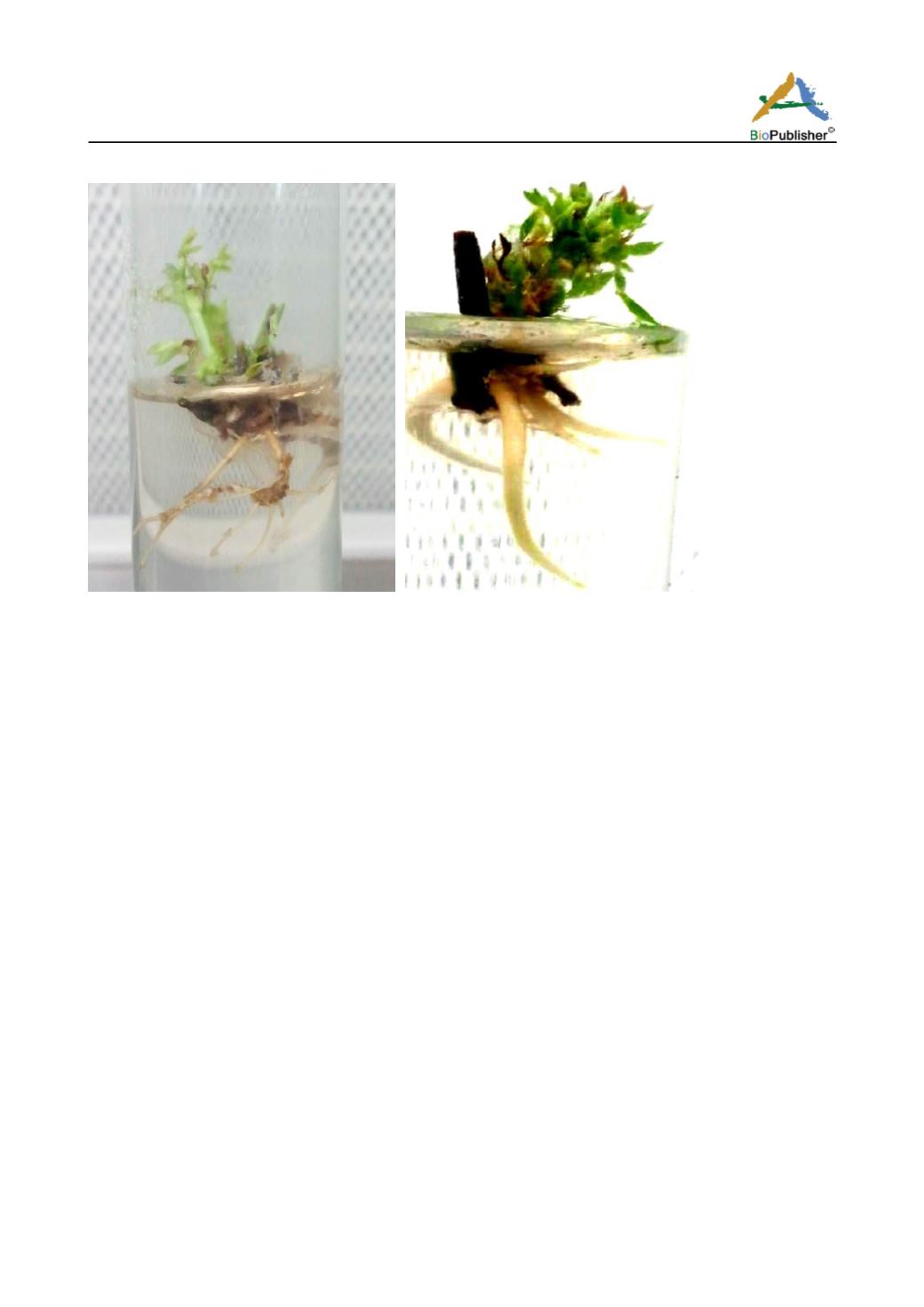
Molecular Plant Breeding, 2016, Vol.7, No.15, 1-12
9
Figure 17 Root development
2 Discussion
Shisham is a deciduous tree of great economic
importance but currently it has badly been affected by
certain diseases in which Shisham dieback is on top.
So there was a need of an efficient micropropagation
protocol that could be a milestone in further tissue
culture studies of Shisham. Due to the strong
heterozygosity of trees, their production using seeds
or other conventional means is not appropriate, if one
wants to conserve the characteristics of a desired tree
species (Das and Mitra, 1990). So in almost all
vegetatively propagated species, the establishment of
efficient tissue culture system has been the foundation
of mass scale planting material and production of
disease free and high quality plants. It is essential for
successful reforestation programs and affluent forest
management as well.
In current study, two types of explants viz epicormic
and axillary shoots were used to identify appropriate
explants source for optimal response. We observed
that micropropagation was independent to explant
source. The present investigation also suggested that
nodal explants with greenish active buds showed
faster multiplication with more number of shoots as
compared to nodal explants with brownish buds. Same
response was reported in mulberry species as well
(Chitra and Padmaja, 1999; Oka and Ohyama, 1975).
The sterilization process has been, more or less as
hard to standardize, as was to optimize the adequate
media requirements for micropropagation itself. In the
sterilization process extra chloroxylenol treatment was
done for efficient bacterial and fungal contamination
control.
Seventy percent ethanol was used
pre-treatment to mercuric chloride, again to free the
cuttings from any kind of bacterial and fungal
contamination. A waxy residue was observed in the
rinse water, after treating the explant with ethanol. The
elimination of the waxy covering from explant
cuttings may cause the explants to become more
permeable to the mercuric chloride, causing elevated
phenolic exudation.
The micropropagation response was severely affected
by pheonolic compounds’ exudation from the
sterilized explants. This may occur due to the ooze of
anthocyanins and other plant fluids in the culture
media from the surface of explant as a result of injury,
which explant faced due to the ethanol treatment. The
anthocyanins were visible as a browning around the
bottom of the cuttings, observed even more easily in
comparatively clear media. This was decreased by
addition of some auxin, which owing to its cell


